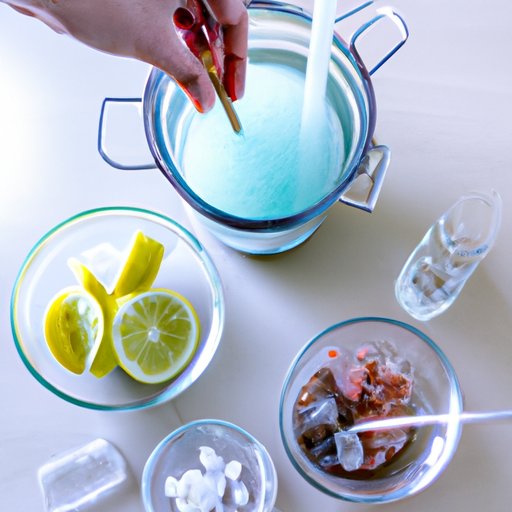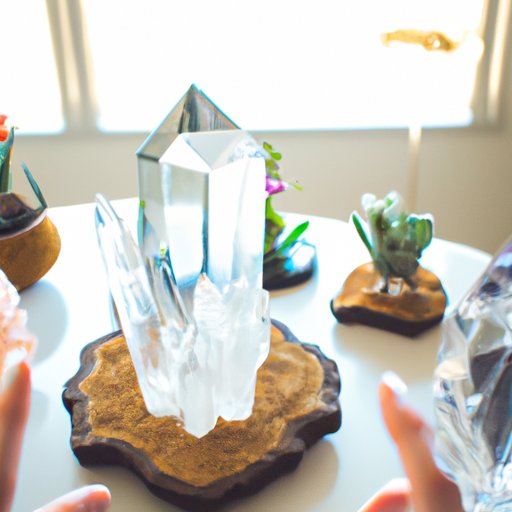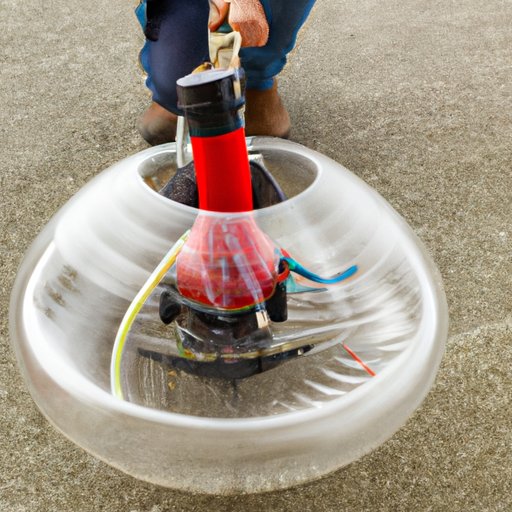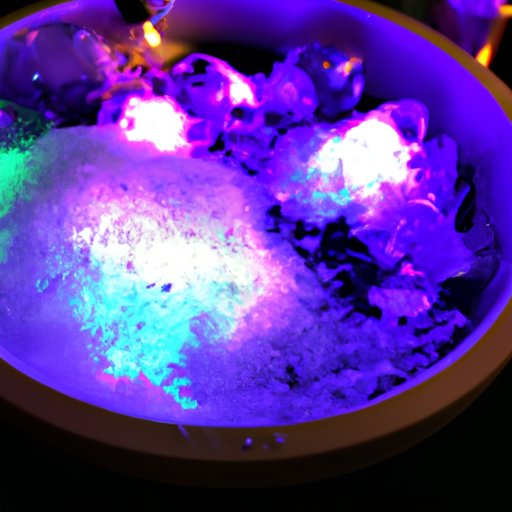Introduction
Science experiments are activities that allow us to explore, discover, and learn about the natural world around us. With the right materials and a little bit of creativity, science experiments can be done in the comfort of your own home with fun results.
In this article, we will explore some science experiments that you can do at home. We’ll look at how to make a classic baking soda and vinegar volcano, grow your own rock candy, explore the science of growing a crystal garden, investigate the power of air pressure with a DIY hovercraft, and build a simple circuit to create an LED light.
Step-by-Step Guide to Creating a Classic Baking Soda and Vinegar Volcano
Creating a classic baking soda and vinegar volcano is a fun and easy science experiment that you can do at home. All you need are a few basic materials and supplies: a container for the volcano (such as a large plastic cup or bowl), baking soda, white vinegar, dish soap, and red food coloring (optional). Here’s how to do it:
1. Gather all the materials needed.
2. Prepare the volcano structure by making a small hole in the center of the container. This will be the “mouth” of the volcano.
3. Add a few drops of dish soap and red food coloring to the vinegar. This will give the eruption a bubbly, colorful effect.
4. Pour the vinegar mixture into the volcano. Then add a few spoonfuls of baking soda to the top of the volcano.
5. Watch the eruption! The baking soda and vinegar will react to create a bubbly, foamy eruption.

How to Make Your Own Rock Candy
Making your own rock candy is another fun and easy science experiment that you can do at home. All you need are a few basic materials and supplies: sugar, water, food coloring (optional), a glass jar or container, a wooden skewer, and a piece of string.
Here’s how to do it:
1. Gather all the materials needed.
2. Prepare the sugar solution by mixing together 3/4 cup of sugar and 1/2 cup of water in a pot. Heat the mixture over medium heat, stirring until all the sugar has dissolved.
3. Add a few drops of food coloring to the sugar solution if desired.
4. Pour the sugar solution into the glass jar or container. Tie one end of the string to the wooden skewer and the other end to a pencil or stick. Place the skewer in the middle of the jar so that the string hangs down into the liquid.
5. Cover the jar with a lid or plate and let it sit undisturbed for 2-3 days. As the liquid evaporates, crystals will form on the string.
6. Once the crystals have grown to the desired size, remove the skewer from the jar and let the rock candy dry. Enjoy your homemade rock candy!

Exploring the Science of Growing a Crystal Garden
Growing a crystal garden is a great way to explore the science of crystallization. All you need are a few basic materials and supplies: Epsom salt, borax, water, food coloring (optional), a shallow dish or container, and a few containers for the different solutions.
Here’s how to do it:
1. Gather all the materials needed.
2. Prepare the crystal garden by mixing together 1/4 cup of Epsom salt and 1/4 cup of borax in a shallow dish or container.
3. Add a few drops of food coloring to the mixture if desired.
4. Fill three containers with 1/2 cup of warm water each. Add 1/4 cup of the Epsom salt and borax mixture to each container and stir until dissolved.
5. Place the containers in a cool and dark place and let them sit undisturbed overnight. As the liquid evaporates, crystals will start to form.
6. Monitor the growth of the crystals over the next few days. Enjoy your homemade crystal garden!

Investigating the Power of Air Pressure with a DIY Hovercraft
Investigating the power of air pressure is a great way to explore the principles of physics. All you need are a few basic materials and supplies: a balloon, a sheet of plastic, a straw, a rubber band, and a small object (such as a paper clip).
Here’s how to do it:
1. Gather all the materials needed.
2. Assemble the hovercraft by stretching the balloon over the sheet of plastic and securing it with the rubber band. Place the straw in the center of the balloon and the small object on top of the straw.
3. Test the air pressure by blowing gently into the straw. The hovercraft will move across the surface due to the pressure of the air.
4. Enjoy the hovercraft!
Building a Simple Circuit to Create an LED Light
Building a simple circuit is a great way to explore the principles of electricity. All you need are a few basic materials and supplies: a battery, a switch, an LED light, and some wire.
Here’s how to do it:
1. Gather all the materials needed.
2. Connect the battery, switch, and LED light using the wire. Make sure that the positive terminal of the battery is connected to the positive terminal of the LED light and the negative terminal of the battery is connected to the negative terminal of the LED light.
3. Test the circuit by flipping the switch. The LED light should turn on when the switch is flipped.
4. Enjoy the LED light!
Conclusion
Science experiments are a fun and engaging way to explore the natural world. From creating a classic baking soda and vinegar volcano to growing your own rock candy, exploring the science of growing a crystal garden, investigating the power of air pressure with a DIY hovercraft, and building a simple circuit to create an LED light, there are countless science experiments you can do at home.
The best part is that these experiments don’t require any special equipment or expensive materials – just a little bit of creativity and some common household items. So get experimenting and have fun learning about science!
(Note: Is this article not meeting your expectations? Do you have knowledge or insights to share? Unlock new opportunities and expand your reach by joining our authors team. Click Registration to join us and share your expertise with our readers.)
